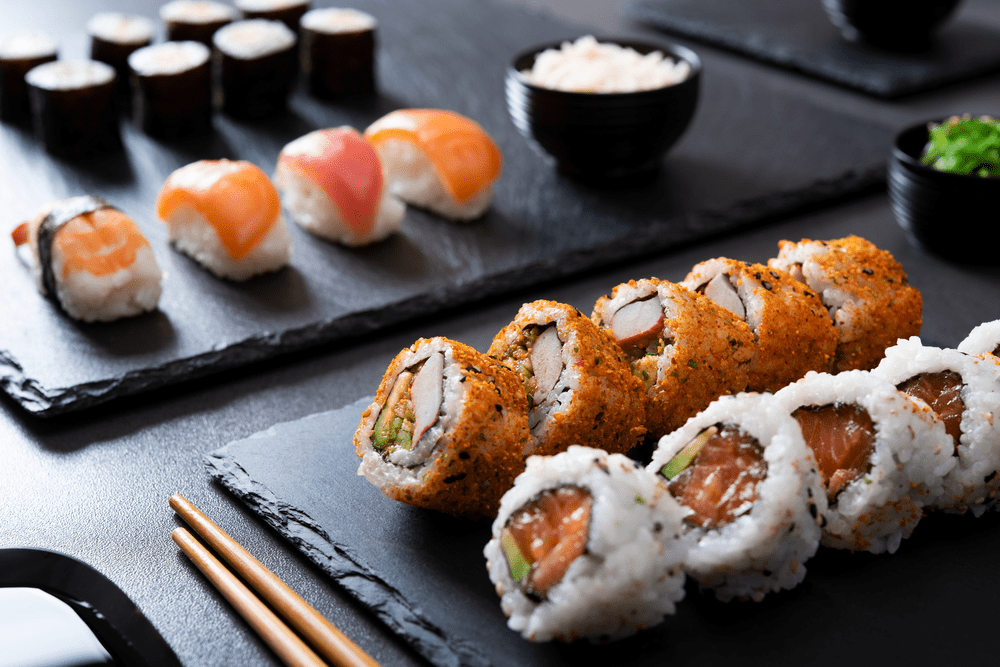The Ultimate Sushi Vinegar Recipe for 1 Cup of Rice
Written By James Morgan
When it comes to perfecting sushi, the importance of sushi vinegar cannot be overstated. This integral component adds that classic sweet, salty, and tangy flavor to your sushi rice, elevating your homemade sushi to restaurant-quality standards. In this blog post, we will explore a detailed, fool-proof sushi vinegar recipe for 1 cup of rice. So, whether youre a sushi novice or a seasoned pro, keep reading to ensure your sushi nights are nothing short of extraordinary.

Why Sushi Vinegar Matters
Sushi vinegar, also known as sumeshi or shari, is a sweet and tangy condiment that plays a critical role in sushi preparation. The combination of rice vinegar, sugar, and salt in sushi vinegar not only enhances the flavor of the rice but also works to preserve it. This vinegar mixture interacts with the rices natural starches, resulting in the distinctive stickiness and slightly shiny appearance thats essential for crafting sushi rolls or nigiri.
Many sushi enthusiasts particularly find that understanding the significance of sushi vinegar truly elevates their culinary skills. The vinegars slight tartness balances the rich, savory flavors of the fish and other fillings, creating harmony in every bite. Plus, the homemade version of sushi vinegar allows you to tailor the flavors to your preference, giving you control over sweetness and tanginess.

Ingredients for the Best Sushi Vinegar Recipe for 1 Cup of Rice
- cup Rice Vinegar
- 1 tablespoon Sugar
- 1 teaspoon Salt
Before diving into the preparation steps, make sure you have all the necessary tools. For a seamless sushi-making experience, having the right cookware, like a Rice Cooker, Sushi Knife, Cutting Board, Strainer, and a Sushi Making Kit, is crucial.

Step-by-Step Instructions for Sushi Vinegar
Step 1: Cooking the Rice
First and foremost, you need perfectly cooked sushi rice as the base for the sushi vinegar. Rinse 1 cup of sushi rice under cold water using a Strainer until the water runs clear. This step is crucial as it helps remove excess starch, ensuring the rice wont become overly sticky or gooey.
Once rinsed, place the rice in a Rice Cooker and add 1 cups of water. Allow it to soak for at least 30 minutes before turning on the rice cooker. After soaking, cook the rice according to your rice cookers settings. If you don't have a rice cooker, you can follow traditional stovetop methods as outlined in various sushi rice recipes. One such useful guide on cooking squash casserole rice can be found here.
Step 2: Preparing the Sushi Vinegar
While the rice is cooking, take a small saucepan or pot and combine cup rice vinegar, 1 tablespoon sugar, and 1 teaspoon salt. Warm the mixture over medium heat, stirring continuously until the sugar and salt fully dissolve. Be careful not to let the mixture come to a boil as it could lose some of the desired flavors. The key here is to create a homogenous solution, where the sugar and salt have melted completely into the rice vinegar.
If you're looking for an in-depth guide on using cast iron griddles, which can be useful for other Japanese dishes, check out this article.
Step 3: Combining the Vinegar and Rice
Once the rice is cooked, transfer it to a large wooden bowl or hangiri. Spread the rice evenly and let it cool for a few minutes. Then, gradually add the prepared sushi vinegar to the rice. Using a wooden paddle or shamoji, gently fold the rice to incorporate the vinegar. The goal is to mix thoroughly without crushing the grains, which maintains the rices texture. Fanning the rice as you mix can help in cooling and giving the rice a glossy shine.

Tips for Perfect Sushi Vinegar
Mastering sushi vinegar involves paying attention to details and ensuring that each component harmonizes well. Firstly, the quality of ingredients is paramount. Opt for a high-quality rice vinegar and ensure that the sugar and salt are finely granulated. This allows for quicker dissolution and a smoother final mixture.
Additionally, the temperature plays a crucial role. The sushi vinegar should be warm but not hot when adding it to the rice. If the vinegar is too hot, it can make the rice overly sticky. Conversely, if it's too cold, it may not mix well. Consistent folding, rather than stirring, helps avoid crushing the rice grains and retains the desired texture.
For more intricacies on preparing similar cuisine, you might find the journey of cooking chicken thighs in a Dutch oven intriguingly similar yet distinct. Click here for more insights.
Storing Sushi Vinegar and Leftover Rice
If youve made more sushi vinegar than whats required, you can store it in an airtight container in the refrigerator for up to a month. Always give it a good stir before using it again to recombine the sugar and salt, which may settle at the bottom. Leftover sushi rice should ideally be used on the same day. If necessary, you can store it in the refrigerator for up to 24 hours, but be aware that the texture might change. When refrigerating, cover the rice with a damp cloth or plastic wrap to maintain moisture.
Making Sushi at Home: Essential Equipment
Having the right tools can simplify your sushi-making process and drastically improve the experience. A high-quality Sushi Knife is essential for cleanly slicing fish and vegetables. You'll also need a sturdy Cutting Board and a complete Sushi Making Kit to roll out perfect sushi every time.
Additionally, keeping these tools in pristine condition is crucial for longevity and performance. Cookware Cleaner and Cutting Board Oil are excellent choices for maintaining and prolonging the life of your sushi-making equipment.
For more substantial guidance on rice vinegar sushi, check out this detailed article.
As an Amazon Associate, I earn from qualifying purchases.



